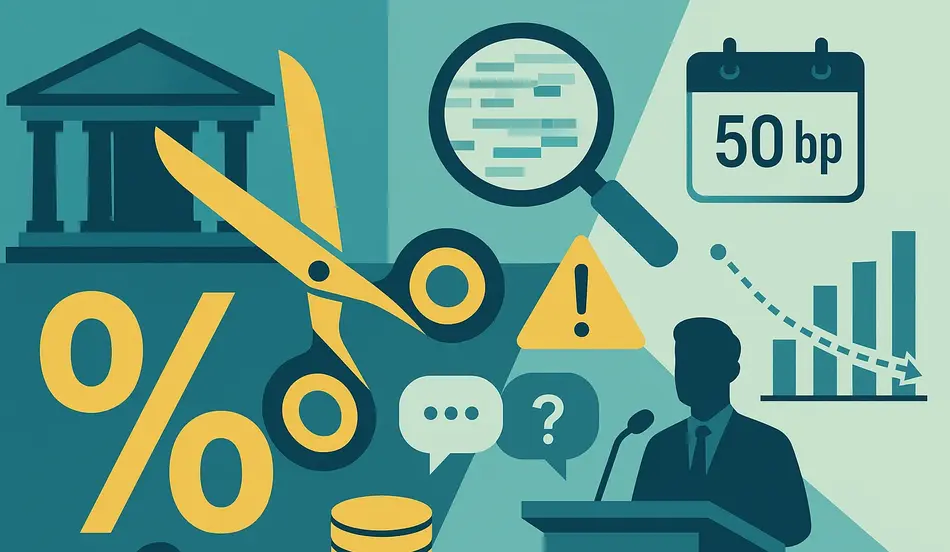U.S. Treasury Secretary Scott Bessent has suggested the Federal Reserve should be open to a half-point interest rate cut at its September meeting, citing slowing payroll growth, economic softness in rate-sensitive sectors, and a need for more reliable economic data.
In an interview, Joe Lavorgna, counselor to Bessent, defended the proposal, noting that Fed policy is currently “well above neutral” and that the central bank’s own forecasts have been consistently off the mark. “The market has been saying for three years that monetary policy is too tight because the ten-year [Treasury yield] has been trading below the Fed funds rate,” Lavorgna said.
BLS Data Quality Under Scrutiny
Lavorgna also addressed mounting skepticism over the Bureau of Labor Statistics’ monthly employment reports, pointing to a pattern of significant downward revisions. While stopping short of alleging political manipulation, he argued that such volatility undermines public confidence. “The key point is that people want to have confidence in the numbers,” he said, calling for the adoption of better technology and methods to improve accuracy.
The discussion comes as the Biden administration faces questions about the recent appointment of EJ Antoni to lead the BLS, given his political affiliations and limited background in labor data collection. Lavorgna countered that Antoni’s economics training equips him to ensure higher-quality statistics that align with GDP trends.
Hire Smart Before the Economy Shifts
Post your job on WhatJobs today and reach top candidates—secure your talent pipeline ahead of policy changes.
Post a Job Now →Trade Policy Sparks Debate
Bessent also drew attention for floating the idea that Nvidia’s 15% export tax on certain chips could serve as a model for other industries. Critics warn such targeted tariffs resemble industrial policy, but Lavorgna framed the measure as part of a broader national security strategy: “Economic security is national security.”
Fed Leadership Speculation
With speculation swirling about potential replacements for Fed Chair Jerome Powell, some analysts worry the administration could prioritize dovish policy over inflation control. Lavorgna dismissed those concerns, stressing that the president is willing to reverse course if rate cuts prove premature. “If there’s a mistake, then the Fed could reverse,” he said.
He also defended Trump’s unorthodox public criticism of business leaders, framing it as part of the president’s unconventional but “highly effective” communication style. Despite occasional controversy, Lavorgna credited the administration’s policies with attracting foreign capital, managing tariffs effectively, and supporting economic resilience.
FAQs
1. Why is the Treasury pushing for a 50 basis point rate cut?
Officials argue that rate-sensitive sectors like housing and autos are weakening and that current Fed policy rates are above neutral, potentially slowing economic growth.
2. What concerns exist about BLS employment data?
There have been repeated downward revisions in monthly jobs reports, prompting calls for improved data collection methods and greater public trust in the figures.
3. Why is Nvidia’s export tax significant?
The administration views the 15% levy as a national security measure that could become a template for protecting other strategic industries.
4. Could Fed leadership change influence monetary policy direction?
Yes. A new Fed chair could take a more dovish stance, but officials say any rate decisions would remain data-dependent and reversible if inflation resurges.




